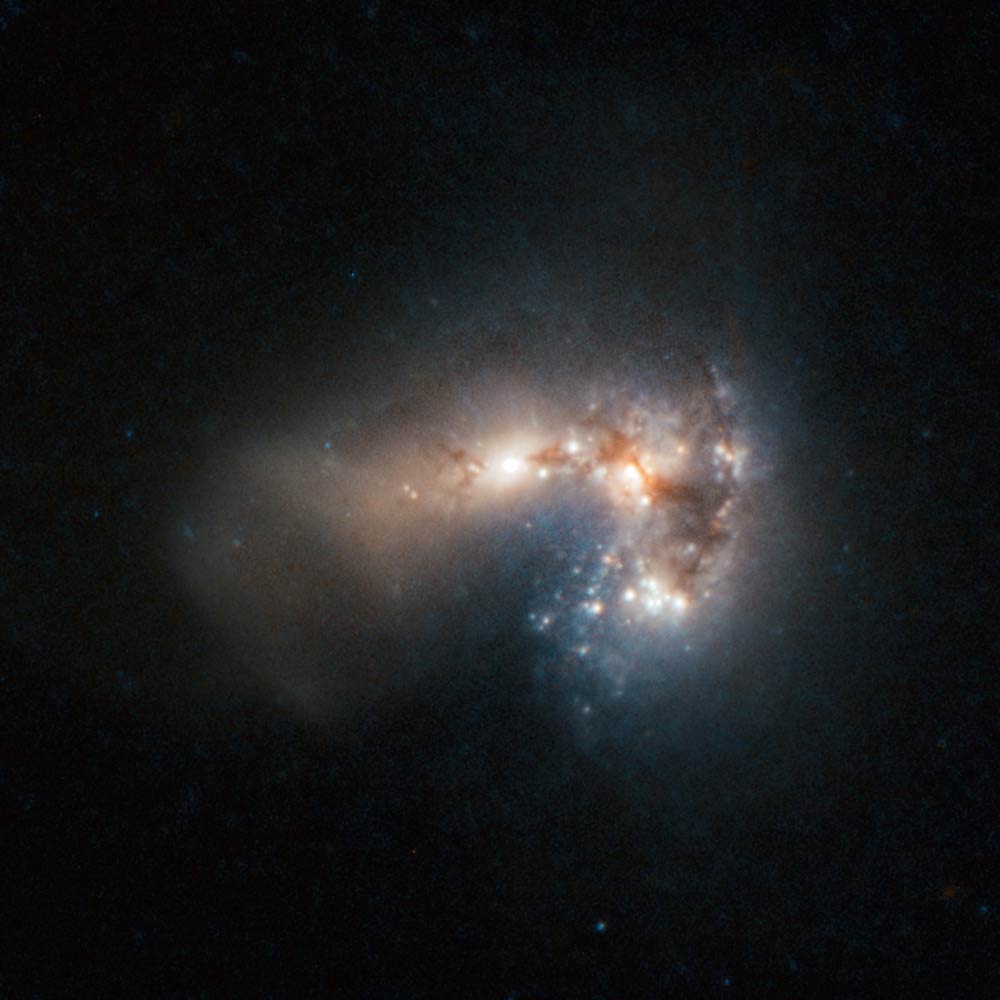Star Birth Frenzy Revealed in New Photo

A frenzy ofstar birth has been captured in a new photo of a distant but extremelybright galaxy.
In thephoto, stars in the Haro 11 galaxy are seen clumped together in morethan 200separate groups are seen hatching at a "monumental rate," one whichconverts the equivalent to 20 times the mass of the sun into new starseachyear, astronomers with the European Southern Observatory said in astatement. [NewHaro 11 galaxy photo.]
Theastronomers created the new image by combining data from the ESO VeryLargeTelescope and the Hubble Space Telescope operated by NASA and theEuropeanSpace Agency.
Haro 11 isthe second-closest Haro-type galaxy to Earth and is located 300 millionlight-yearsaway.
Harogalaxies, named after astronomer Guillermo Haro (who discovered them in1956), arethose that emit unusually intense blue and violet light, whichtypicallyindicate a density of newborn stars or busy region known as an activegalacticnucleus.
Haro 11 isknown as a starburstgalaxy,onewhich is undergoing intense star formation. It hasbeen around for about 40million years, but only began to peak in its birth of star clusters 3.5millionyears ago.
The researchis detailed in a recent issue of the Monthly Notices of the RoyalAstronomicalSociety.
Breaking space news, the latest updates on rocket launches, skywatching events and more!
"Withsuch an extremely young cluster population, Haro 11 represents a uniqueopportunity to investigate the youngest phase of the cluster formationprocessand evolution in starburst systems," the astronomers wrote in theirstudy.
Most of thevery young, massive stars in Haro 11 are less than 10 million yearsold. Thehigh luminosity of the stars in the infrared (beyond red visible light)part ofthe spectrum has led astronomers to believe they have been caught whilestillemerging from their cloudy cocoons or birth sites.
From this,astronomers deduced that Haro 11 is the result of the galactic mergerbetween ayoung, gas-rich galaxy and an older, star-rich one.
- HubblePhotos: When Galaxies Collide
- Images:Amazing Galaxies
- HugeStar Burns Fast and Furious in Photo
Zoe Macintosh is a science writer who covered human spaceflight, astronomy and science for Space.com in 2010. She also covered general science for Space.com's sister site Live Science. Zoe studied English literature and physics at Smith College, where she also wrote for the Smith Sophian. Her work has also appeared in the National Association of Science Writers website.
